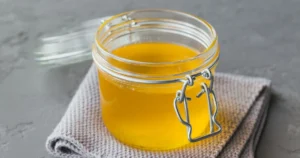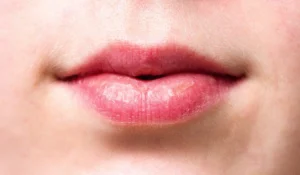Does Exfoliating Remove Tan?
Exfoliating is a skincare practice that involves the removal of dead skin cells from the surface of the skin. It is often touted as a solution for various skin concerns, including removing tan. But does exfoliating really help in removing tan? In this article, we will explore the relationship between exfoliation and tan removal, providing you with insights and answer for your question does exfoliating remove tan? So let’s dive in!
Sun-kissed skin is often considered attractive and desirable. However, prolonged sun exposure can lead to the darkening of the skin, commonly known as tan. Tan occurs due to the increased production of melanin, the pigment responsible for skin color. While some individuals embrace their tan, others may seek methods to lighten or remove it. Exfoliation is one such method that is often suggested.
 Understanding Tan
Understanding Tan
Before we delve into the effectiveness of exfoliation in tan removal, it’s important to understand how tan develops. When your skin is exposed to the sun’s ultraviolet (UV) rays, it triggers the production of melanin. Melanin acts as a natural defense mechanism, absorbing the harmful UV radiation and protecting the deeper layers of your skin. As a result, your skin darkens to shield itself from further damage.
You may also like.How Long Does Sunburn Last 10 Effective Home Remedies How to Treat Chemical Burn on Face from Skincare Retinol for Beginners: Unlocking the Secrets to Youthful Skin
How Does Exfoliation Work?
Exfoliation involves the mechanical or chemical removal of dead skin cells from the outermost layer of the skin. Mechanical exfoliation typically involves using a scrub or brush to physically slough off the dead skin cells, while chemical exfoliation involves the use of specific ingredients like alpha-hydroxy acids (AHAs) or beta-hydroxy acids (BHAs) to dissolve the bonds between the skin cells.
Does Exfoliation Remove Tan?
While exfoliation can help improve the appearance of the skin and enhance its overall radiance, it may not directly remove tan. Tan resides deeper within the skin due to the increased production of melanin in response to sun exposure. Exfoliating the outermost layer of the skin can promote cellular turnover, making the skin look fresher and more vibrant. However, it may not penetrate deep enough to eliminate the excess melanin responsible for tan.
The Benefits of Exfoliating
Although exfoliating may not directly remove tan, it offers several benefits for the skin:
- Improved Skin Texture: Exfoliating removes dead skin cells, promoting a smoother and softer skin texture.
- Enhanced Radiance: Regular exfoliation can give your skin a healthy glow by boosting blood circulation and cell renewal.
- Unclogged Pores: Exfoliation helps to unclog pores, preventing the buildup of dirt, oil, and dead skin cells that can lead to acne or breakouts.
- Better Product Absorption: By removing the barrier of dead skin cells, exfoliation allows skincare products to penetrate more effectively, maximizing their benefits.
- Reduced Appearance of Fine Lines: Exfoliating stimulates collagen production, which can help reduce the appearance of fine lines and wrinkles.
Types of Exfoliants
There are two main types of exfoliants: physical and chemical.
- Physical Exfoliants: These include scrubs, brushes, or loofahs that physically remove dead skin cells through gentle abrasion.
- Chemical Exfoliants: Chemical exfoliants use specific ingredients such as AHAs, BHAs, or enzymes to dissolve the bonds between skin cells, promoting their shedding.
How to Exfoliate Properly
To exfoliate your skin effectively and safely, follow these steps:
- Choose the Right Exfoliant: Select an exfoliant suitable for your skin type and concerns.
- Prep Your Skin: Cleanse your face with a mild cleanser to remove any makeup or impurities.
- Apply the Exfoliant: Follow the instructions provided with the exfoliant, using gentle, circular motions to massage it onto your skin.
- Be Gentle: Avoid excessive scrubbing or harsh pressure, as it can irritate the skin.
- Rinse Thoroughly: After exfoliating, rinse your face with lukewarm water to remove any residue.
- Moisturize: Apply a moisturizer to hydrate and nourish your freshly exfoliated skin.
Precautions to Take
While exfoliation offers numerous benefits, it’s important to take precautions to avoid any potential harm:
- Avoid Over-Exfoliation: Exfoliating too frequently or aggressively can damage the skin barrier and cause irritation. Limit exfoliation to 1-2 times per week.
- Choose the Right Exfoliant Strength: If you are new to exfoliation or have sensitive skin, start with milder exfoliants and gradually increase the strength.
- Protect Your Skin: Always wear sunscreen with a high SPF to shield your skin from harmful UV rays, even after exfoliation.
- Listen to Your Skin: If your skin becomes red, irritated, or sensitive after exfoliation, reduce the frequency or strength of exfoliation and consult a dermatologist if necessary.
Other Methods to Remove Tan
In addition to exfoliation, there are other methods that can help in tan removal:
- Skin-Lightening Products: Certain creams or serums containing ingredients like vitamin C, kojic acid, or arbutin can help fade tan over time.
- Natural Remedies: Natural ingredients like lemon juice, aloe vera, turmeric, or yogurt may have mild tan-lightening properties. However, it’s important to note that natural remedies may not provide immediate results and can vary in effectiveness.
- Professional Treatments: In severe cases, professional treatments like chemical peels or laser therapies may be recommended by a dermatologist to address stubborn tan.
Maintaining a Healthy Complexion
To maintain a healthy complexion and prevent tan from returning, consider the following tips:
- Sun Protection: Apply a broad-spectrum sunscreen with an SPF of 30 or higher every day, even on cloudy days.
- Seek Shade: Limit your sun exposure during peak hours (10 am to 4 pm) when the sun’s rays are the strongest.
- Cover Up: Wear protective clothing, hats, and sunglasses to shield your skin from direct sunlight.
- Hydrate: Drink plenty of water to keep your skin hydrated and support overall skin health.
- Healthy Lifestyle: Follow a balanced diet, get enough sleep, and manage stress levels, as they can impact your skin’s appearance.
Conclusion
Exfoliation can improve your skin’s texture, radiance, and overall health, but it may not directly remove tan. To effectively address tan, a combination of exfoliation, sun protection, and other tan removal methods may be necessary. Remember to exfoliate in moderation, listen to your skin, and consult a dermatologist for personalized advice.
Disclaimer: The information provided in this article is for educational and informational purposes only. It is not intended to be a substitute for professional advice or diagnosis. Always consult with a qualified skincare professional or dermatologist for personalized recommendations and guidance regarding your specific skin concerns.
FAQs
Is exfoliation suitable for all skin types?
Exfoliation can benefit most skin types, but it's important to choose the right exfoliant and be mindful of your skin's sensitivity.
How often should I exfoliate my skin?
Exfoliation frequency depends on your skin type and the strength of the exfoliant. Generally, 1-2 times per week is sufficient for most people.
Can exfoliation cause skin irritation?
Exfoliation done improperly or too frequently can cause skin irritation. It's essential to follow proper techniques and listen to your skin's response.
Are natural remedies effective in tan removal?
Natural remedies may have mild tan-lightening properties, but their effectiveness can vary from person to person.
Can exfoliation remove stubborn tan completely?
Exfoliation alone may not completely remove stubborn tan. It's best to combine exfoliation with other tan removal methods for optimal results.


 Understanding Tan
Understanding Tan

